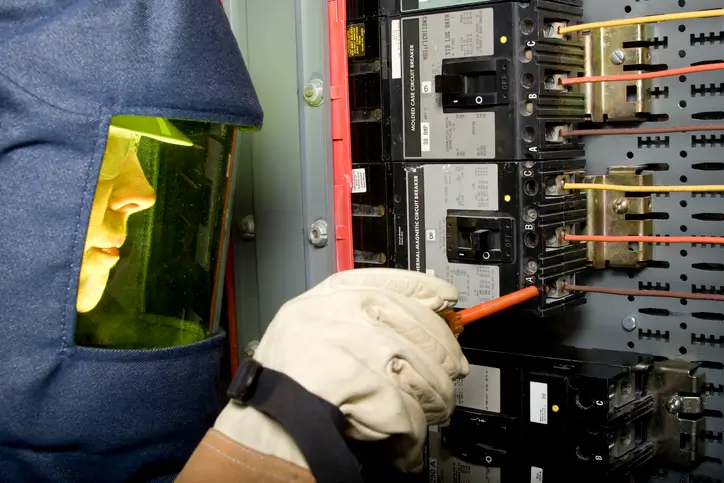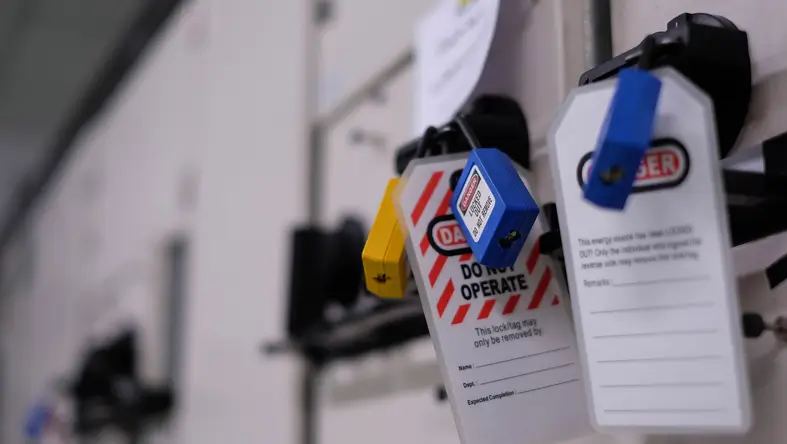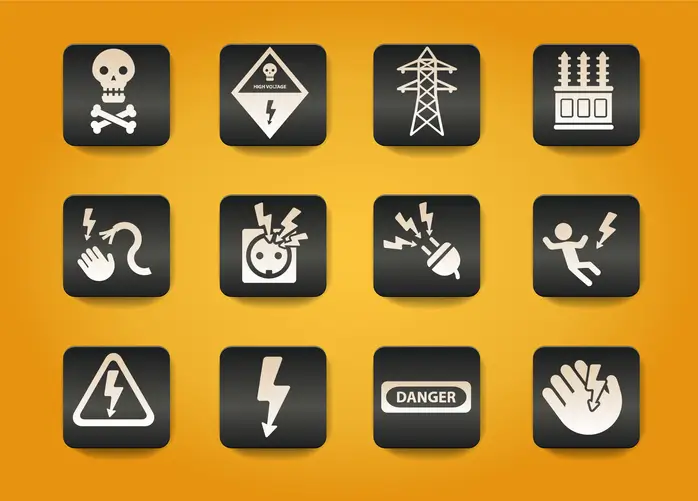A Guide to OSHA’s Workplace Electrical Safety Standards
Electrical hazards are among the most significant and life-threatening risks in the workplace. In an effort to promote electrical safety and reduce the number of accidents and fatalities, the Occupational Safety and Health Administration (OSHA) has published a comprehensive guide on electrical safety in the workplace. This article will provide an overview of the key points and recommendations outlined in the guide, available at OSHA website.

Identifying Electrical Hazards
The OSHA guide highlights four major electrical hazards to be aware of in the workplace:
Contact with power lines:
Overhead and underground power lines are highly dangerous, as they carry high-voltage electricity. Contact with these lines can result in severe injuries or fatalities. Employers must take necessary precautions, such as maintaining safe distances and using proper equipment and insulation.
Lack of ground-fault protection:
Ground-fault circuit interrupters (GFCIs) are essential to prevent electric shock caused by ground faults. OSHA mandates that GFCIs be used in construction sites and other environments where employees are exposed to wet or damp conditions.
Improper use of extension cords and flexible cords:
Flexible cords and extension cords must be used correctly to prevent electrical hazards. They should not be used as a substitute for fixed wiring, be run through walls, or be used in wet environments without proper protection.
Damaged electrical equipment:
Frayed or damaged cords, missing ground prongs, and damaged electrical equipment pose a risk of electrical shock or fire. Employers should enforce regular inspections and maintenance of electrical equipment safety standards.

OSHA Standards for Electrical Safety
OSHA has established several electrical safety regulations to protect workers. These include:
Design standards for electrical systems (29 CFR 1910.302-308)
OSHA requires employers to follow specific design standards for electrical systems, which include proper grounding, insulation, and installation of protective devices.
General requirements for electrical installations (29 CFR 1910.303)
This standard establishes the general safety requirements for electrical installations in the workplace. It covers aspects such as proper wiring, circuit protection, and the prevention of electrical hazards through safe design and maintenance. Employers must make sure that electrical equipment guidelines are followed and the tools are maintained according to these relevant regulations.
Safety-related work practices (29 CFR 1910.331-335)
These standards outline the work practices employees must follow when working with or near electrical equipment, such as using appropriate personal protective equipment (PPE) and following lockout/tagout procedures.
Training requirements (29 CFR 1910.332)
Employers must provide adequate training for employees who work with or are exposed to electrical hazards. Training should include information on the recognition and mitigation of electrical hazards and the proper use of PPE.

Establishing an Electrical Safety Program
To further implement electrical safe work practices, OSHA recommends that employers implement an electrical safety program that includes:
A clear policy statement:
Employers should establish a written policy that emphasizes the importance of electrical safety and outlines the organization’s commitment to ensuring a safe work environment.
Employee training:
Ongoing and comprehensive training should be provided to all employees exposed to electrical hazards, focusing on hazard recognition, safe work practices, and emergency response procedures.
Inspections and audits:
Regular inspections of electrical equipment and systems should be conducted to identify and correct potential hazards. Audits of the electrical safety program can help identify areas for improvement and ensure compliance with OSHA regulations.
Incident investigation and reporting:
Employers should establish a process for investigating and reporting electrical incidents, near misses, and unsafe conditions. These investigations can help identify root causes, develop corrective actions, and prevent future incidents.

Personal Protective Equipment (PPE)
Properly using PPE is critical in reducing the risk of electrical injuries. OSHA recommends the following PPE for employees working with or near electrical hazards:
Insulated gloves:
Employees should wear insulated gloves rated for the voltage level they will be working with. Gloves should be inspected regularly for damage and replaced as needed.
Protective clothing:
Flame-resistant (FR) clothing can help protect workers from electrical arc flash hazards. The clothing’s arc rating should match or exceed the potential energy exposure level for the specific task.
Face and eye protection:
Safety glasses or goggles and face shields should be worn when working with electrical equipment to protect against arc flashes, flying debris, and other hazards.
Insulated tools and equipment:
Employees should use insulated tools and equipment, such as pliers, wire strippers, and screwdrivers when working with or near life electrical components. These tools help prevent electrical shock and reduce the risk of short-circuiting
Voltage-rated footwear:
Non-conductive, voltage-rated footwear can provide additional protection against electrical shock. Employees should ensure their footwear is in good condition and free of holes or excessive wear.

Lockout/Tagout Procedures
Lockout/tagout (LOTO) procedures are essential for ensuring the safety of employees working on or near electrical equipment. OSHA requires employers to develop and implement a written LOTO program that includes the following:
a. Procedures for shutting down, isolating, blocking, and securing energy sources during maintenance and servicing activities.
b. Lockout devices, such as padlocks, are used to prevent the accidental re-energizing of equipment during service or maintenance.
c. Tagout devices, such as warning tags, can be used to inform employees of the LOTO status and any potential hazards.
d. Training for employees on the proper implementation and use of LOTO procedures

Promoting Electrical Safety Awareness
Employers should actively promote electrical safety awareness in the workplace by:
a. Encouraging employees to report any electrical hazards they observe.
b. Displaying posters and other informational materials on electrical safety throughout the workplace.
c. Regularly discuss electrical safety during team meetings and safety briefings.
d. Recognizing and rewarding employees who demonstrate a commitment to electrical safety.
Conclusion
Electrical safety is paramount in maintaining a safe and productive work environment. Employers must adhere to OSHA’s electrical safety standards and implement comprehensive electrical safety programs. Employers can significantly reduce the risk of electrical hazards by providing appropriate training, promoting awareness, encouraging safe work practices, and creating a safer workplace.





